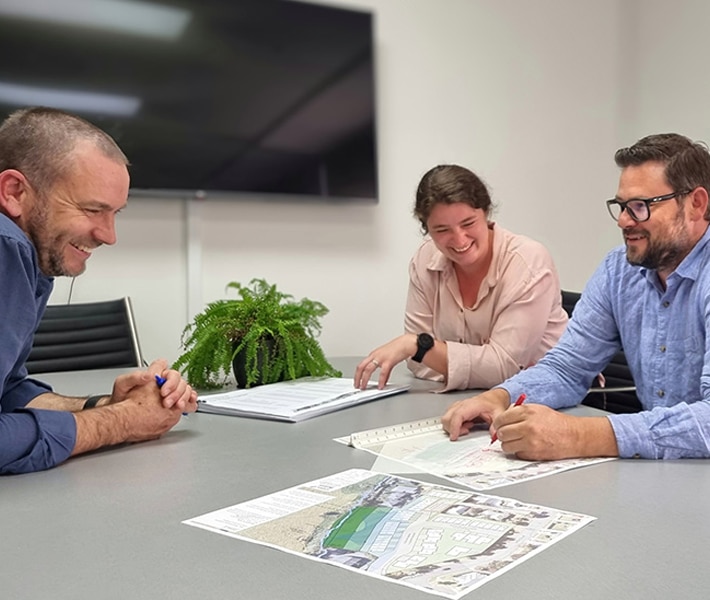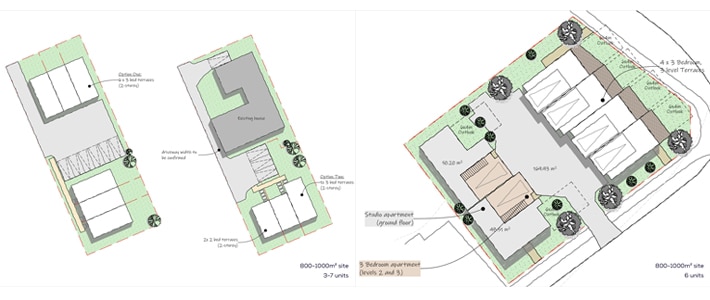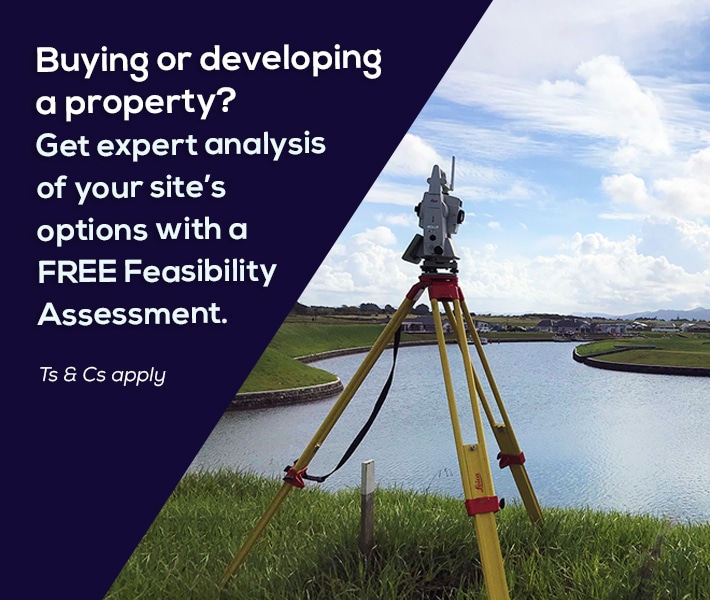WHAT WE DO
Development Feasibility
Know Your Site’s Potential Quickly
If you’re planning your next development, a thorough assessment of your options is a critical part of due diligence. At Cato Bolam, we provide clear, expert insights within just 3–4 days,* giving you the confidence to move forward. *Turnaround applies to sites up to 1,200m².
Our Feasibility Assessments include hand-sketched design options tailored for residential sections, factoring in planning and infrastructure constraints. With expert input from our engineering, planning, subdivision, and architecture specialists, we offer the clarity you need to move forward.
If required, our team can also provide estimated development costs for both the consenting and completion phases.

What We Cover During the Initial Consultation
- Property details – aerial photograph, site size and dimensions, legal description and certificate of title number.
- Zoning and Rules applying to the property – this gives a basic understanding of development possibilities.
- Any servicing or flooding issues – we consult Council databases and use our own engineering knowledge to provide this advice.
- Preliminary concept sketches by our design expert.

Limited Time Offer!
Claim Your Free Feasibility Assessment
Planning a development? A thorough feasibility assessment is essential for making informed decisions. At Cato Bolam, we deliver expert insights within 3–4 days, helping you move forward with confidence. Plus, when you proceed with us for your project, we’ll credit the feasibility cost back to you (T&Cs apply).
✅ Fast turnaround concept design options
✅ Clear, expert insights on your site’s potential
✅ Essential due diligence before you invest
✅ Fee credited when you proceed*
Contact our team today to take advantage of this offer!

Tailored Development Feasibility at Any Scale
Whether you’re a first-time developer or a seasoned investor, we work with you to ensure your project aligns with your vision and, most importantly, is viable.
This critical early phase evaluates your site’s potential and explores available options. If feasibility is confirmed, it sets a clear path forward through to completion. If significant hurdles arise, this stage may indicate that a different site should be considered.
As land development experts, we bring decades of experience in subdivision and architectural design. With every project, you gain the advantage of our multi-disciplinary in-house team, with our Planners, Surveyors, Engineers, Architects, and Environmental specialists providing key input at the earliest concept stage. This ensures a seamless and efficient development process from feasibility to completion.
Whether you’re looking to buy or develop, Cato Bolam can help you to unlock your site’s full potential.

Find out what opportunities exist for your property.
Book a free discovery call today
FREQUENTLY ASKED
Development Feasibility Questions
What is the Auckland Unitary Plan?
The Auckland Unitary Plan is a comprehensive (and large!) document that sets out clearly what you can and cannot do with your land. If you can do something, the AUP also outlines how you need to go about it - this is often through a resource consent process. One of our skills is to know about the AUP and advise you on how it applies to your property.
How much will it cost to develop my land?
It depends on what you want to do. We can discuss that with you and once we have a basic undertsanding of where you may wish to go - including some options - we can cost it out for you.
Can I develop/subdivide my land/property?
Quite possibly! If you contact us with your property address we shoud be able to provide you with a quick initial answer.
How do I maximise my property’s potential?
Our initial assessment of your property and Council's district plan and other requirements will identify what the possibilities are. We can then advise on the design, consenting and construction costs, and estimated timeframes. This will enable you to see how you can maximise the property's potential, and enable an analysis of the potential return on investment.
Does it cost money to check my properties potential?
A desktop assessment of your property's development potential can be undertaken with one of our development experts free of charge. Additional stages of feasibility reports for funding purposes or due diligence reports to clarify specific development point will incur a fee based on hourly rate. We will give you an estimate if this seems the best course of action to take.
How do I check the potential of my property?
The first step in understanding your property's potential for development is to contact one of our Directors who can let you know about Council and planning requirements, any issues that we can readily identify, the practicality of achieving subdivision or building development and the economics of any physical construction required on site. Most of this can be given in an email as a desktop exercise, however we will sometimes suggest that there is a need for further invesigation, including a site visit.

